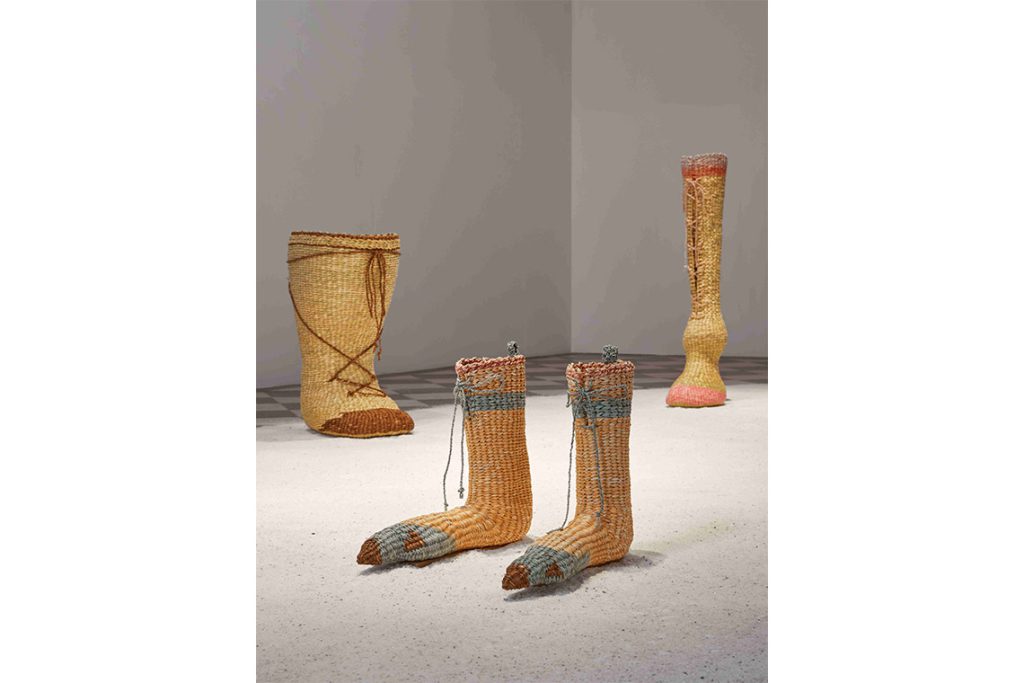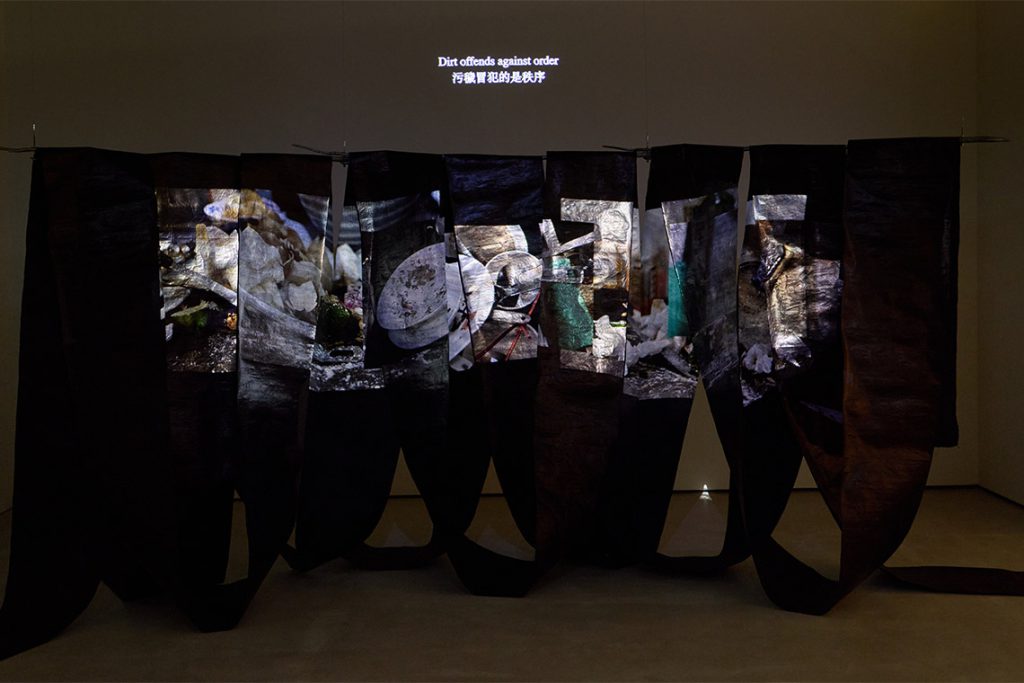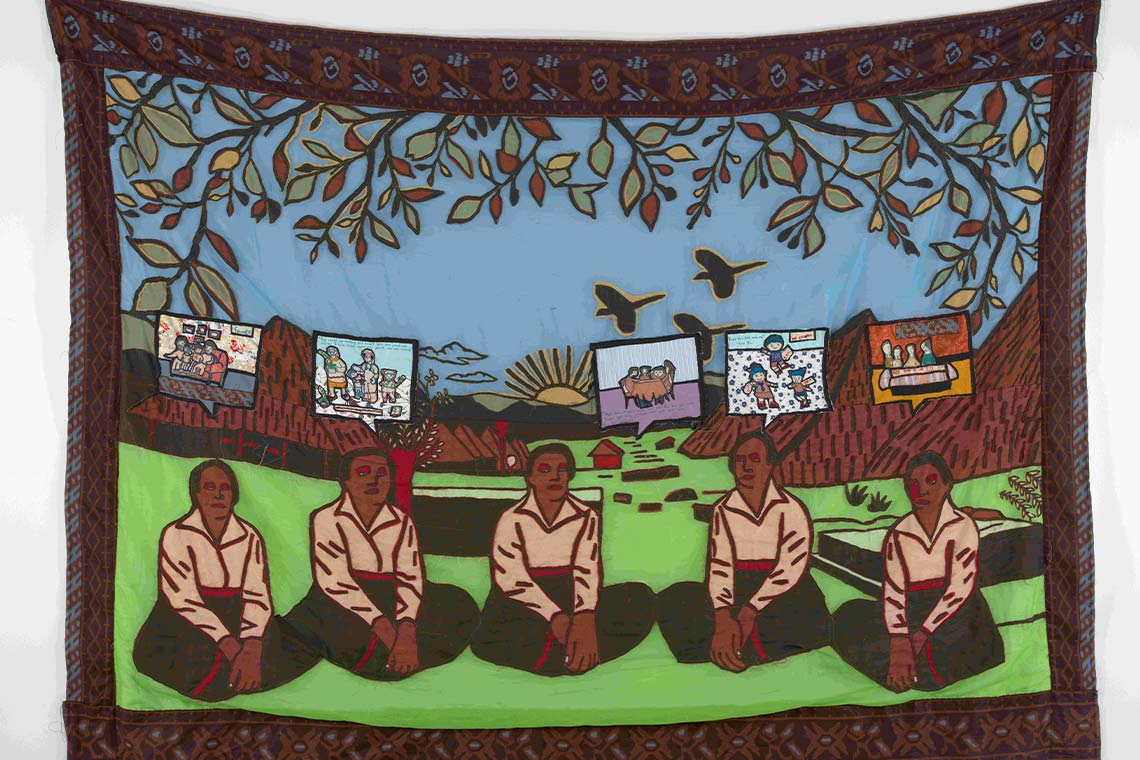Curated by Weiwei Wang, Lining Revealed – A Journey Through Folk Wisdom and Contemporary Vision at Hong Kong’s Centre for Heritage, Arts and Textile (CHAT) offers new insights into the impact of textiles on contemporary art.
Textiles and associated craftsmanship are now firmly established at the forefront of contemporary art practice. Embroidery, weaving, beadwork and knitting – the range of techniques and treatments is vast and deeply layered – all help explain the prevailing creative interest in material exploration, which itself speaks to a desire to connect the past and present. Yet what does this say about how the interface between textile crafts and contemporary art might help shape our future? Enter Lining Revealed, which links heritage and art to explore how craft and technology can become mutual conductors of emotion and knowledge that go beyond conventional geographies and timescales.
The location of CHAT provides crucial context to the exhibition. The space is a part of The Mills, the revitalised former cotton-spinning mills of Nan Fung Textiles in Tsuen Wan, Hong Kong. Opened in 1954 and closed 54 years later, the company was a cornerstone of the textile industry that once permeated all aspects of life in the city, demonstrating the interconnectedness that textiles create – from materials and economy to heritage and social issues.

Threads throughout Lining Revealed establish how human concerns and values are shared, transferred or linked across cultures. Yong In Hong’s Ring of Animals (2023) is situated at the entrance to the space. Woven straw is turned into shoes for five creatures: a giraffe, a kangaroo, a heron, a gorilla and a bear. The empty boots prompt the viewer to imagine beyond the physical and fill the gaps where the bodies would be. Accompanying audio blurs the imagined and reality by creating a bond between humans, nature and the space. More broadly, the work sets the stage for the rest of the exhibition as it weaves through social, ecological and cultural concerns, eliciting empathy and directly engaging audiences in the conversations.
Commissioned for the exhibition, Han Mengyun’s The Unbearable Purity: Three Stories (2025) is an interactive installation with moving images projected onto fabric, blurred by the darkness of the room and draping of the material. Visitors insert white paper fans in front of the projection, creating a clear magnified image that brings the visuals into focus – these include the suds from washing fabrics, the chaos of dirty dishes and the sewing of new clothes for the new year. The work takes blurred, obscured actions and brings them to the forefront to address the hidden costs of domestic labour that are often taken for granted. The video projected on the back wall includes subtitled text such as “What breaks order is dirt”, “It’s also exhausting to death to make bright cloth” and “The free body is dirty”. The installation is a part of Han’s Night practice, which delves into the artist’s experiences as a woman and a mother while exploring collective struggles for visibility and access, as well as origins of subalternity.

Salima Hakim’s Her Cabinet of Curiosities (4, 5 and 6) (2024) is one of three works that were co-commissioned with the Sharjah Art Foundation and unveiled earlier this year at Sharjah Biennial 16. The result of her residency in Flores, Indonesia, the installation of textile artefacts points to a history that has suppressed women and their contribution to the shaping of humanity. Other co-commissions include Günes Terkol and Yim Yen Sum. Terkol’s Hope from Mothers (2024) is embroidery on a textile banner, also stemming from a residency in Flores and which illustrates the hopes and dreams of five women she met as a result of her workshops. Yim’s installation From Here to There II (2024) is a collaboration with women weavers during her residency in Manggarai, Indonesia. It features stitched symbols and patterns that evoke scenes of daily life, from the location of water sources and paddyfield division to depictions of responsibility, spirituality and the impermanence of life. The interactive work also encourages visitors on site to add their own embroidery in the hope of cross-culture communication and reconnection with each other and nature.

The Neo-Folk Matrix series (2023–24) by Ye Funa delves into the artist’s ongoing research into Chinese folk art. Here the fabric is a vessel, storing information that is stitched, woven or folded among the threads and often related to the matriarchy. Ye’s practice explores the relationship of perceived authority and social life, with her mixed-media collages not only sharing values and history but also becoming new platforms for self-expression and memories. The found textiles incorporate folk art symbols and merge layers to become a form of identity within a community, its women not passive but actively shaping the future. The accompanying phone-sized video utilises popular mobile apps and templates to create an accessible new generation of folk art.
A strong thread in the exhibition is technology. At a time of widespread concern over the loss of traditions in the modern age, it is worth remembering that none of the works in the show could exist without the human element. New means and methods may enhance or create new possibilities, but they need empathy and intention to become more. Through them, the digital no longer becomes isolating but instead can work as a connector, especially when directed to a particular end. Almagul Melinbayeva and Suad Gara’s works consist of a video and two multimedia installations, Transoxiana Dreams (2011), Caspian 9 (2024) and Mother Water: Gulbibi Balkhash (2024). Each work urges responsibility in the face of the ecological crises facing water resources and calls for accountability on the part of the forces behind the destruction. The textile features AI-generated patterns woven using traditional Central Asian techniques and mythologies to use the past to find solutions for the here and now. It neatly underlines the exhibition’s wider question of how can we learn from collective knowledge to impact the future?



